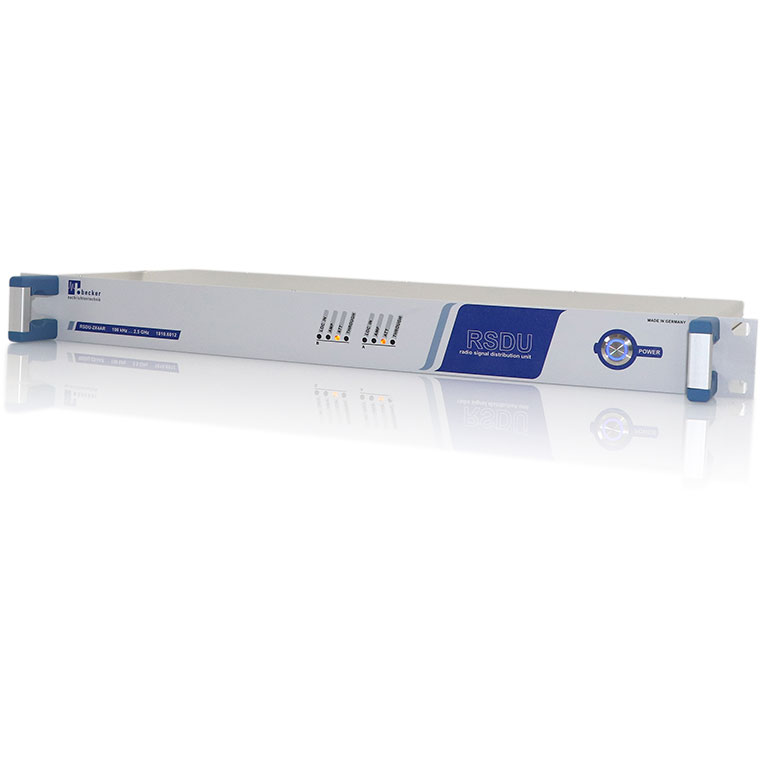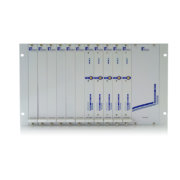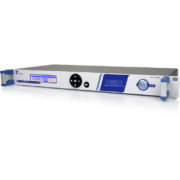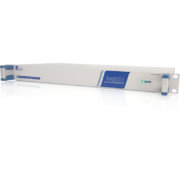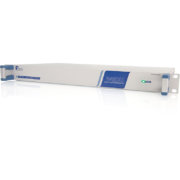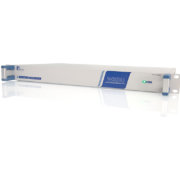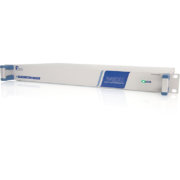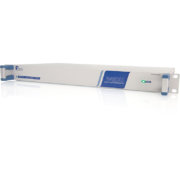The RSDU-2X4AR is an equipment for testing broadcast infotainment devices for automotive industry. It represents an extraordinary level of integration and compactness. RSDU-2X4AR takes care of the complete RF signal conditioning and distribution in end-of-line applications, even for parallel testing of multiple devices with many antenna ports. Merely the signal generators have to be added to the application, no further splitters, bias-tees or DC measurement equipment is necessary. It covers a vast dynamic range allowing for both sensitivity and overload test cases. The RSDU-2X4AR offers a graphic web interface for control, for local or remote-controlled operation.
The device is suitable for the frequency range 100 kHz to 2500 MHz. It has two identical sections each with 4 in level adjustable outputs.
Each output has an adjustable current sink for testing phantom voltage supplies. Both sections have 3 RF inputs LOW, HI and LOC. The wideband input LOC covers the full frequency range 100 kHz to 2500 MHz. Both sections can be cascaded via an coaxial cable on the rear side of the instrument. Thus up to 8 DUT (Devices Under Test) RF interfaces can be fed with signals coming from a common source with one RSDU-2X4AR. Cascading of multiple RSDU-2X4AR devices is possible as well to address even more higher number of antenna ports from the same source. LEDs on front side show the operation state of the instrument.
Via switching stages in each signal path, signals can be amplified, attenuated or switch through without influence to signal level. A programmable attenuator in the common path enables the adjustment of the sum level. With additional attenuators in the output paths individual adjustments of level are possible. The whole adjustment range over all stages in signal level is approx. 87 dB, adjustable in 0.25 dB steps.
For the test of phantom supplies the RSDU-2X4AR has 8 programmable current sinks. Each current sink can be set in the range 0 to 400 mA in 0.5 mA steps. The integrated current sinks do not require external cables to the DC loads. This avoids unwanted couplings from local broadcast stations to the test cables and thus to the RF test signals.
Via internal voltage and ampere meters the amount of phantom voltage and current can be monitored without the effort of external multimeters.
In automatic test sequences all settings of both sections can be remote controlled via ASCII strings. Additional the RSDU-2X4AR offers an graphical web interface for local or remote setup, monitoring and debugging.

